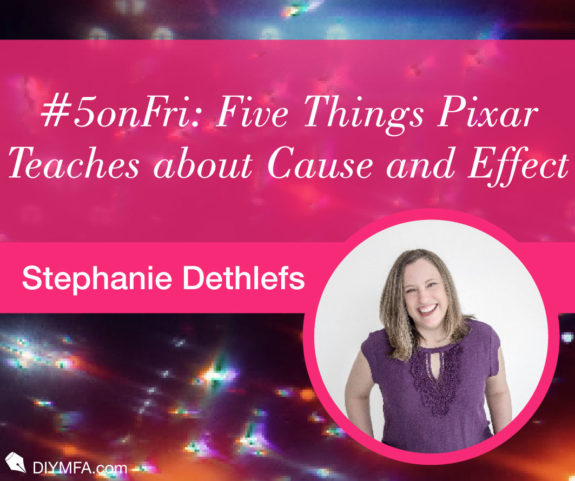I’m going to admit it: I fell hard for Pixar.
It was the original Toy Story that punched me in the heart first; the nostalgia and sweet characters, blended with a lifelike style of animation I’d never seen before. I then dove headfirst into their collection of short movies, many of which I showed over and over to my elementary students as an excuse to watch them again.
In his book Creativity, Inc, Pixar cofounder Ed Catmull divulges a behind-the-scenes look at what creates the magic in stories of childhood toys, bugs, cars, fish and garbage-cleaning space robots with hearts of gold. And while much of it boils down to an environment that supports teamwork and creativity, there is one familiar element that Pixar teaches that we can all lean on for creating tightly crafted stories and keep the reader turning the page: their storytelling structure.
1. Once upon a time / Every day…
The classic once-upon-a-time opener serves more purpose than simply making us think of princesses in ball gowns. Although we are often anxious to jump right into the action, we have to pause and think about the state of affairs at the beginning before everything changes and the plot begins to unfold.
In addition to setting the stage with exposition, this is also where we need to think deeply about who our protagonist is and how they spend their time. Most importantly, we need to understand how they got here, to the beginning of this story, and why they are going to make the decisions they are going to make.
In Toy Story, we are intentionally shown how Woody has always been Andy’s most beloved toy and the leader of the toy box community, which sets him up to have a devastating fall from grace with the introduction of Buzz Lightyear. Could the stakes be any higher?
2. One day…
This is the catalyst, the thing that happens that changes everything. The catalyst could be huge, like the loss of a loved one, a diagnosis, or being replaced by a new space ranger toy. It could also be small, like something someone says offhandedly to the protagonist.
Whatever it is, the catalyst needs to be intentional and clear, because it leads into everything that comes next.
3. Because of that…
This is the only beat in the structure that will repeat…and repeat…and repeat. But it’s also perhaps the most crucial. As writers, we are tasked with creating a series of events and obstacles that our protagonist and other characters will move through. And so often we wind up writing our way into dead ends or dark corners where we never meant to be.
Instead of simply saying “and then this happened”, we are intentionally connecting plot events through cause and effect by swapping it with because of that. Because one thing happened, the next thing happened. Because the protagonist was feeling a certain way, they made the next decision. Because Buzz Lightyear came into Andy’s life, Woody decided to get rid of him. This is how our key plot events stay connected and intentional, and keep from getting lost in the woods.
Pixar is known for giving all of their characters some sort of emotional arc. Whether the arc is central to the story, or subplot, or backstory, we can play with it as we make decisions for even the smallest character.
4. Until finally…
This could be thought of as the climax of the story, the peak where everything changes again, for good this time. But we should also consider this as the moment when the lightbulb goes on above the protagonist’s head.
In Woody and Buzz’s case, they realize they’ll be better together than working against each other. They now understand the world in a new way, and are going to make decisions from here on out based on this new understanding.
It’s what your reader has been rooting for them to realize all along the way. If, as the writer, we have a vision for what this point is, it’s much easier to point our protagonist in the right direction from the beginning, even if they take some missteps and wrong turns along the way.
5. And ever since that day…
Of course, many stories don’t wrap up with quite a nice, tidy bow, as Pixar would have us believe. But we have to think about what imagery, emotions, and new understandings we want to leave the reader with as they turn the final page. This connects right back to once upon a time and every day: Who is the protagonist now? How have the events of the story changed them? What do they see for themselves in the future?
In summary…
Writing a novel or short story is very different from writing a screenplay, but a story is a story, and the essential elements are the same. What this fairytale-esque story structure offers us is a way to connect the key scenes and draw a through line that takes the reader on both an external adventure, and an internal emotional journey (to infinity…and beyond!).

Stephanie Dethlefs is a writer and book coach living in the Pacific Northwest with her husband, two teenagers, two cats, and a spunky dog. A former teacher, she now helps writers with stories on their hearts finally write their novels. She’s the author of the middle grade novel Unspoken and several published essays and articles. Connect with Stephanie at HelloWriters.net.







